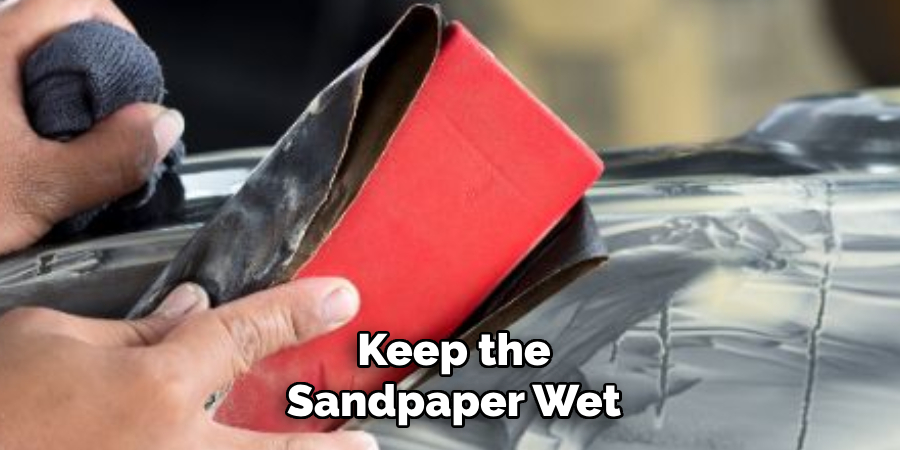If you own a vehicle with black rims, you know how stunning they can look when they are clean and shiny.
However, over time, black rims can fade and lose their luster due to exposure to various elements like dirt, dust, and UV rays. The good news is that there are effective methods to restore faded black rims to their original sleek appearance.

In this guide, we will explore some tried-and-tested techniques and steps you can take to revitalize your black rims, allowing them to regain their rich, deep black color and reclaim their spot as a standout feature of your vehicle’s overall aesthetic. Let’s dive in and discover how to restore faded black rims to their former glory.
What are the Benefits of Restoring Faded Black Rims?
Before we jump into the restoration process, let’s first discuss why restoring faded black rims is essential.
- Improves Aesthetics: The most apparent reason for restoring faded black rims is to improve the overall look of your vehicle. Removing dirt and grime buildup and restoring the dark color of your rims, you can make your car look more sleek and stylish.
- Protection Against Corrosion: Over time, faded black rims can become more vulnerable to corrosion and damage due to constant exposure to dust, dirt, and other elements. By restoring them, you are adding a layer of protection against future damage.
- Cost-Effective: Restoring your faded black rims is more cost-effective than replacing them entirely with new ones. You can achieve great results without breaking the bank with the right techniques and products.
- Increases Vehicle Value: Whether you plan on selling your vehicle in the future or just want to maintain its value, restoring faded black rims can help increase its overall value.
What Will You Need?
To successfully restore faded black rims, you will need the following materials:
- A bucket of warm water
- Car soap or a mild detergent
- Soft-bristled brush or sponge
- Microfiber towels or cloths
- Wheel cleaner (optional)
- Aluminum polish (if your rims are made of aluminum)
Once you have gathered all the necessary materials, you are ready to begin the restoration process.
8 Easy Steps on How to Restore Faded Black Rims
Step 1. Prepare the Rims
Start by thoroughly cleaning the rims to remove any dirt, debris, or brake dust that may have accumulated. Follow these steps to prepare the rims for restoration:
- Fill a bucket with warm water and add car soap or a mild detergent.
- Dip a soft-bristled brush or sponge into the soapy water and gently scrub the rims, paying close attention to the areas with heavy dirt or grime.
- Rinse the rims with clean water to remove all traces of soap.
- For tougher stains or buildup, you can use a specialized wheel cleaner. Follow the product’s instructions and rinse the rims thoroughly after using it.
- Dry the rims with a microfiber towel or cloth.

Step 2. Determine Rim Material
Before proceeding, it is essential to determine what material your black rims are made of. Different materials require different restoration methods. The most common types of rim materials include chrome, aluminum, steel, and painted alloy. Keep in mind that certain techniques may work better on specific materials.
Step 3. Remove Clear Coat (if applicable)
If your black rims have a clear coat that has started to wear off or peel, you may need to remove it to restore the rims properly. Here’s how you can do it:
- Use a clear coat remover or stripper specifically designed for automotive use. Follow the manufacturer’s instructions carefully when applying the product.
- Apply the clear coat remover to the rims using a brush or applicator, ensuring even coverage across the affected areas.
- Allow the product to sit for the recommended amount of time so it can break down the clear coat.
- Use a soft, non-abrasive scrub pad or cloth to remove the loosened clear coat gently.
- Rinse the rims thoroughly with clean water to remove any residue, and dry them thoroughly before moving to the next step.
If your rims don’t have a clear coat or they’re still intact, you can skip this step and proceed directly with the restoration process.
Step 3: Sand the Rims (if necessary)
If your black rims have noticeable scratches or imperfections, sanding them can help smoothen the surface and prepare it for restoration. Here’s how you can do it:
- Start by selecting the appropriate grit sandpaper for your rims. A medium to fine grit, such as 320 or 400, is usually suitable.
- Wet the rims or the sandpaper with water to create a lubricating surface.
- Begin sanding the rims in a circular motion, applying gentle pressure. Keep the sandpaper wet throughout the process to prevent overheating.
- Continue sanding until the scratches or imperfections are minimized or removed. Be cautious not to sand excessively, as it may damage the rims.
- Rinse the rims with clean water to remove debris, and dry them thoroughly before proceeding with the next step.

If your rims are in good condition without any noteworthy scratches or imperfections, you can skip this step and move on to the next phase of the restoration process.
Step 4. Inspect and Polish the Rims
After cleaning and sanding (if necessary), inspect the rims for any remaining blemishes or imperfections. Look for areas that may need extra attention, such as small scratches, discoloration, or uneven surfaces. Once the inspection is complete, polish the rims to restore their deep black shine.
- If your rims are made of aluminum, apply a small amount of aluminum polish to a clean microfiber towel or cloth.
- Rub the polish onto the rims in small, circular motions, focusing on one section at a time.
- Continue polishing until you notice a rich shine developing on the surface of the rims.
- If your rims are painted alloy or another material, choose an appropriate polish or product designed specifically for that type. Always follow the manufacturer’s instructions for best results.
- Once the polishing is complete, use a clean microfiber towel to gently buff the rims, removing any excess product and leaving a smooth, glossy finish.
This polishing step enhances the appearance of your rims and adds a protective layer, helping to guard against future fading or damage.
Step 5. Apply a Protective Coating
Applying a protective coating is essential to ensuring your restored rims maintain their enhanced appearance for as long as possible. This extra layer will guard against environmental elements, dirt, and moisture, preventing the rims from fading again.
- Choose a high-quality rim protectant or wax specifically formulated for automotive use.
- Apply the protectant according to the product’s guidelines, ensuring even coverage across all surfaces of the rims.
- Allow the coating to cure or set as instructed on the product label, maximizing its effectiveness.
- For added durability, you may want to apply multiple coats, allowing each layer to dry between applications.
Your black rims are now revitalized and reinforced with a layer of protection, ensuring they stay sleek and vibrant for the long haul.
Step 6. Final Touches and Maintenance Tips
Once the restoration process is complete, take a moment to admire your work and check the rims for any missed spots or uneven areas. Wipe away any residue or smudges with a clean microfiber cloth, and ensure the rims are spotless before wrapping up.
To maintain the appearance of your black rims over time, follow these simple tips:
- Regularly clean your rims with a mild detergent and a soft-bristled brush to prevent the buildup of dirt and grime.
- Avoid harsh chemicals or abrasive cleaners, as they can deteriorate the finish of your rims.
- Reapply a protective coating every few months to keep your rims looking new.
- Inspect the rims regularly for any signs of fading or damage, addressing issues promptly to prevent further deterioration.

Step 7. Avoid Using Harsh Materials and Techniques
Lastly, avoiding harsh materials or techniques on your black rims is important, as they can potentially damage the finish or cause discoloration. Here are some things to keep in mind:
- Avoid using steel wool or abrasive pads when cleaning or restoring your rims. Opt for soft cloths or non-abrasive scrub pads instead.
- Be cautious when using high-pressure water hoses or pressure washers on your rims, as the force of the water can also cause damage.
- Consider getting a specialized rim cleaner for routine maintenance instead of generic household cleaners.
Step 8. Take Your Rims for a Spin!
After completing the restoration process, it’s time to show off your hard work by taking your vehicle out for a spin. Restored black rims not only enhance your car’s overall aesthetic but also demonstrate your attention to detail and care for your vehicle. Enjoy the sleek and polished look that your rims bring to the road, turning heads wherever you go.

By following these steps and maintaining your rims with proper care, you can keep your black rims looking brand new for years to come.
Conclusion
Black rims can quickly become faded and dull due to exposure to environmental elements, dirt, and grime. However, with the right products and techniques, you can quickly restore their deep black shine and maintain it for a long time. Remember to clean your rims regularly, avoid harsh materials or methods, and apply protective coatings as needed to keep your rims looking sleek and vibrant.
Hopefully, the article on how to restore faded black rims has provided you with valuable insights and tips to keep your rims looking brand new.
With proper care, your black rims will continue to add a touch of sophistication to your vehicle for years to come. Happy driving!
Edmund Sumlin is a skilled author for Metal Fixes, bringing 6 years of expertise in crafting a wide range of metal fixtures. With a strong background in metalwork, Edmund’s knowledge spans various types of fixtures, from decorative pieces to functional hardware, blending precision with creativity. His passion for metalworking and design has made him a trusted resource in the industry.
Professional Focus:
- Expert in Metal Fixtures : Edmund aesthetic specializes in creating durable and innovative metal fixtures, offering both appeal and functionality. His work reflects a deep understanding of metalworking techniques and materials.
- Sustainability Advocate : He is dedicated to using sustainable practices, ensuring that every fixture is crafted with eco-friendly methods while maintaining high-quality standards.
In his writing for Metal Fixes, Edmund provides valuable insights into the latest trends, techniques, and practical advice for those passionate about metal fixtures, whether they are professionals or DIY enthusiasts. His focus on combining artistry with engineering helps others discover the true potential of metal in design.


